attention to detail
WHAT THE IDEA IS ?
HOW IT WORKS ?
What benefit/experience your idea provides ?
Don't Underestimate
The Importance of Details to the Overall Impact
Functional requirements
- structural stability
- center of gravity (visual center, actual center),
- charging port,(holes on the surface, ).
- movements (Securing wheels, rails, rotational movement,
- space for extension,
- enough room for airflow(like a vacuum cleaner), straight-through suction path
- hidden parts (power cords (Dyson))
- anticipate troubles, use design to find a workaround
- access for maintenance
- respond to the intended experience
Ergonomic
- housed in an ergonomic position, optimal control,
- tilt angles,
- easy to carry/hold (create patterns)
- easy to push/open
Visual cue
- guidance,
- usability (how to hold, push, grab, retract, replace)
- buttons/switches (hidden or exposed),
- indication lights,
- texture and sound (speakers)
- compartments
- Visual attention- imbalance, surprise, unexpected, visual echoing
Psychological reassuring
- visual weight,
- balance, closure, continuity
- design affordance-reduce human errors-slot, guideway
- visualize redundant safety measures
Gestalt psychology—perceive entire patterns or configurations, not merely individual components.
- connections
- joints,
- axis,
- transition between surface, transition between parts
How to manufacture?
- Constraints- anticipate the trouble and reduce the risk
- place mating lines strategically (wall thickness),
- CMF
- draft,
- enhance walls (ribs),
- reduce material waste and consumption
How to assemble?
- minimize parts and labor in assembly
- optimal choice on mating lines again(make assembly line run smoothly)
- easy to be disassembled (consider packing & storage)
- offset surfaces to provide a margin for human error
- design a tool or fixture for easy assembly
Cost
- reduce size,
- minimum order, choices of manufacturing process
- material choice
- screen(software)
- maintenance
Aesthetic
- address volumetric considerations and constraints (product architecture/internal components)
- styling, visual perception, reducing visual weight, gestalt, patterns, rhythm
- use the multi-sensory connection to create memory-engaging all senses, sight, sound, touch, smell, and taste
- fashion trends
- marketing- how the design looks in motion (the rise of short-form video on social media)
All
Function
Ergonomic
Visual cue
Psych reassuring
Psych disruption
Gestalt
Manufacturing
Assembling
Cost
Aesthetic
nasal surgery
50164_lf
PK-Diego-microdebrider-with-an-inferior-turbinate-blade-inserted-Inset-1-shows-the-PK_Q320
df2b7e618a39202dc0bc3f82a34187bd
540802d22c7be43a4658b5c80148587b
5f2c0e17efa20ece1cd66099b4e2731a
18134d842bc7a5642b6bb33c558ba06c
d4d88199da9bf9193cf2130b7223faaf
ccbe0895f1a8ea41878388323a0cae57
ddbb9879f280dabe0c6ddb00a8c5e965
20030921002320
8
338ec5fc119680d478471b6f76b27a04
smart lock1
smart lock2
ZIBA printer2
ZIBA printer
inspiration
Ziba
Ziba1
b12232fc050a626ff2d2451c3aee4d57
3340b85bb7dcb751df95277d1662aa31
100e242a449191499df3fb15f5432f84
7d15df2a89702c9d3ae1c5e5161ceb64
ff8de1433a1c5e982e6afb9d9f82aeb5
17091d3415141b6f884fd6b65f88806f
a16fa021775a0d5bbc245b1f5fea334f
dec5e431b981cce0127940c19dfe72fc
7c0b0359521d786586995ddea188d37f
36c92d95708cf2360cc655b31e1045dd
2454574ea5d4753b2327521794596173
cb2f3a5113b249afc4450a60e0be5def
cf0516e3ac92cc937c71e1c005e19cff
85742eadf23159c697ea4fbd100f7935
708bf8967c69c5e628a29a780311b3fe
unnamed-20
Attila_1b_thumb3
Attila can compactor
Hannibal tape dispenser
texture 1
texture 2
529e730cf8577ab8f770dfa03f377df4
b7268208cce9ffaa63808d26686d7a04
65c60bf45f4d67f70c2943bce54c7835
hover camera
hover-camera-front
Hover-Camera-Released-off-Hand
f7cd9e9dce996ef4374c2dc86545565a
bd185deb07b159caeb09d6cee749d0c3
66a4e4ee156a2ae4e796a55b3cc3caf3
a6459f1021ed55ff36321f41f00a7d95
0cd271bfe95e6e665a2984b60506ad2d
fd74e84dc862619819bb851d13658fed
e2dee34002a190eb9b95c91bb206c0d9
c8cb32d1786c1568211f354beb55ff32
4f705504195fb64a2f0bd43f4f98d0fb
